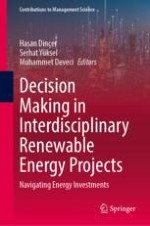This edited book presents a comprehensive analysis of the multidimensional aspects associated with decision making in renewable energy investment projects. It delves into the interplay between interdisciplinary studies, sustainability considerations, and circular economy principles within the renewable energy sector. By examining the impact of these interconnected domains, the book offers valuable insights into the challenges and opportunities inherent in decision making for renewable energy investments.
The book is tailored to a diverse audience, including researchers, scholars, and professionals in the fields of renewable energy, sustainability, circular economy, and business management. It is equally suitable for graduate and undergraduate students studying environmental studies, renewable energy, sustainability, and related disciplines. Professionals working in the renewable energy industry, including project developers, investors, and policymakers, will find valuable insights to inform their decision-making processes. Additionally, engineers, economists, social scientists, and environmental consultants interested in interdisciplinary studies and their intersection with renewable energy will benefit from the book's comprehensive analysis.
